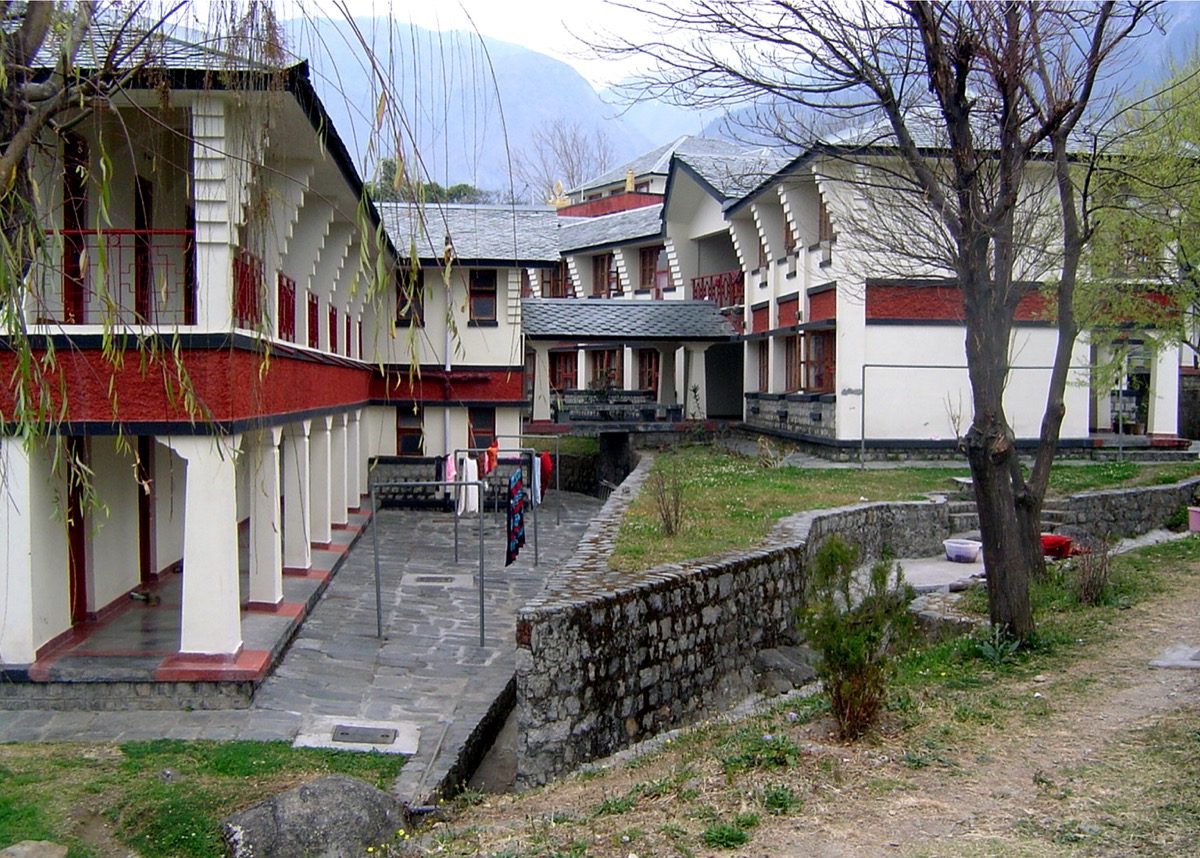
In the last two decades the work has increased in cultural diversity with the design and construction of a monastery for Tibetan refugee Nuns in Dharamsala in the Kangra Valley. The project sponsored by the Tibetan Women’s Association, was executed as an exercise in self-build by the user community. The design was worked out in close consultation with the users, and in keeping with Buddhist principles of harmonious interdependence of all living being and objects.

The construction, including materials and labour, was managed by the user community. This exercise which started nearly twenty years ago, and still continues, has provided a home for nearly 300 refugee nuns, and includes residential, academic, cultural, and primary health care facilities. This project, especially, has strengthened our belief in the innate capacity of humankind, and the marginalized, to find order in nature. Professional people only need to provide expertise to catalyse and guide this effort, and to help make it an everyday feature of the human condition.



The ground plan of the Nunnery was conceived to generate a built-open space pattern which allows the indoor spaces to be naturally lit and ventilated, to receive maximum solar radiation through the winter, and provide a network of circulation spaces which allow all-weather movement throughout the building complex. The design principles generate low-rise structures with maximum load-bearing walls, compact space planning integrated with open spaces, materials chosen for low embodied energy and maximum resistance to weather and climate impact, construction techniques which could be understood and managed by local artisans and maintained effectively by the inhabitants. This resulted in construction costs being reduced by at least one third as compared with conventional construction while providing much improved environmental performance. The carbon footprint of the project is also reduced to an absolute minimum.
More Photos:
The architectural expression is a blend of the imperatives of the site, being the Kangra Valley which is one of the rainiest places in India, and the memory of the colourful, decorated buildings the Tibetans left behind in their homeland. The Buddhist ethos of interdependence of all living forms is the overriding arbiter of aesthetic expression. Site topography, climate, open and built space pattern, and the harmonious blending of several cultures generates the architectural quality and experience. In essence the architecture seeks to be a model of the cosmos predicated on ecological and universal responsibility.












